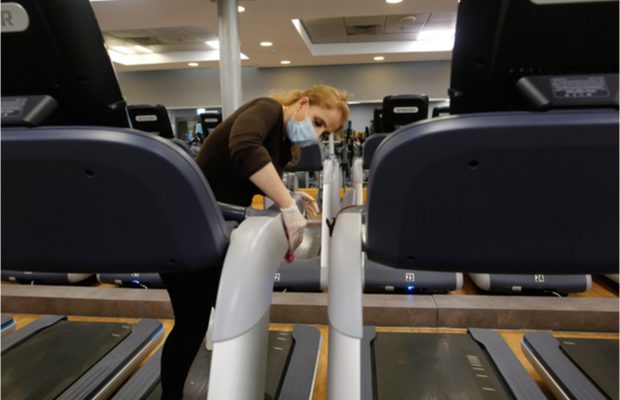
Introducing new policies to an existing program or facility can be a daunting task. You have done all your research, ensured best practices, checked with peers and are ready to release the information to your participants.
However, the question will always come up on how you plan to enforce a policy, especially when the bulk of enforcement lies on a student staff. As a former student employee, it was always difficult to start enforcing new policies, especially when I did not fully understand the reasoning behind the change or the work that went into making such a decision. It can be hard to find investment in change when you are not involved in the process. But, it is unrealistic to include students in every decision one has to make for the job. There are some strategies though to help empower those who have to enforce new policies while still allowing participants to adjust to the change as well.
Verbiage
One thing I always try to do is choose my words carefully when I am speaking with or training students. Rather than refer to policy enforcement I try to say policy education. I find this helps staff understand their larger role is to teach those who use the facility about the rules, regulation or culture rather than dictate it. This also is a great way to help them ease into speaking with those who are older than them or may even teach one of their courses because they are approaching an individual with a teaching mindset rather than with aggression. Additionally, it opens the member up to a better experience because they may not have been aware they were doing anything wrong. By teaching students to educate others, we are setting them up for success; they can have a more positive interaction with someone rather than having to approach with conflict. Teaching students to introduce themselves, state the policy and use positive-based words — please walk vs. no running — can go a long way to help enhance the interaction between a student employee and a member.
Transparency in Decision-Making
As a professional, there are times when you may not be able to be as transparent as you would like in regards to decision-making. However, always ensuring the students know the why behind a policy is key to their success. I also find it is easier not to use a specific example so the member does not feel associated with someone who caused problems. Rather, it is easier to explain the overall rationale behind there being a need for a policy. Usually, we can categorize a policy being implemented into three categories: customer service, safety or facility integrity. These are great starting places most members can support when educated about a policy. Finding ways to train students to rely on the why will only help the adoption phase of a new policy.
Use Student Leaders When Able
It is not always an option to involve students in the decision-making process, but that does not mean their opinion should go unnoticed. Having a leadership staff or student council can help with policy adoption early on. Using these students to address concerns or to bounce ideas off is a great way to build new policies. Often, we learn about issues through our student leadership staff anyways, so why not include them in the process, especially if they are the ones who will end up enforcing it. When I hold meetings with student leaders and they address issues, one of my first responses is, “What do you think would be a good response to this issue?”
Now, this is not to be condescending but to challenge students to think critically about what they are suggesting. Further, during the hiring phase for student leaders, I love to ask for a new program, policy or department enhancement and how they would implement this change. This has helped educate staff on the decision-making process of the department and gives me insight to how they think about problems as a whole. Usually, the best decisions I have had with a group of student leaders is watching them talk about a potential change to our area and how they think we should go about addressing it as a unit. The students have relationships with other staff and members that we as professionals do not have the luxury to have, just as we have different relationships with other professionals or members. The students are the ones who hear the most complaints and have to deal with enforcing the most policy. Therefore, their voices are incredibly valuable when addressing new ideas.
Take Your Time. Education Cannot Happen Overnight
I cannot count the amount of times it seems a new policy is recommended due to one incident or negative interaction. However, it is important to reflect on all the information and to take some time before creating a new policy. There may be times where past experience or the degree of an incident supersedes this, but knowing when you have time to reflect is important.
Implementing a new policy takes a lot of time and educating others about it takes even longer. Take the time to train your staff on the new policy and try to give a window of time for the adoption phase. Push out information via social media, your website and facility signage so participants have access ahead of time. It may take a semester or more for change to be adopted and being patient is key to success. Additionally, it is important to evaluate the policy over time and ensure you are moving in the right direction. Remain flexible to change and seek out responses from student staff or participants about the experience. Most of the time, a policy is created to enhance the experience. If you find this is not the case it may need to be tweaked to help meet your intended goals.
Professionals are always seeking ways to improve their department and the experience of the student staff and participants. Remembering higher education is a place for learning and most policies are in place to prevent negative impacts to an area, it is important to try and prevent negative interactions. Remembering the first step to enforcement is education, students will become better leaders and have stronger interactions with participants. I always strive to create an environment where staff can support each other and champion the users rather than create an “us vs. them” mentality. This can be hard to overcome, especially if you are in a position that deals with a lot of complaints. Work together to improve your experiences and empower everyone to learn and grow.










